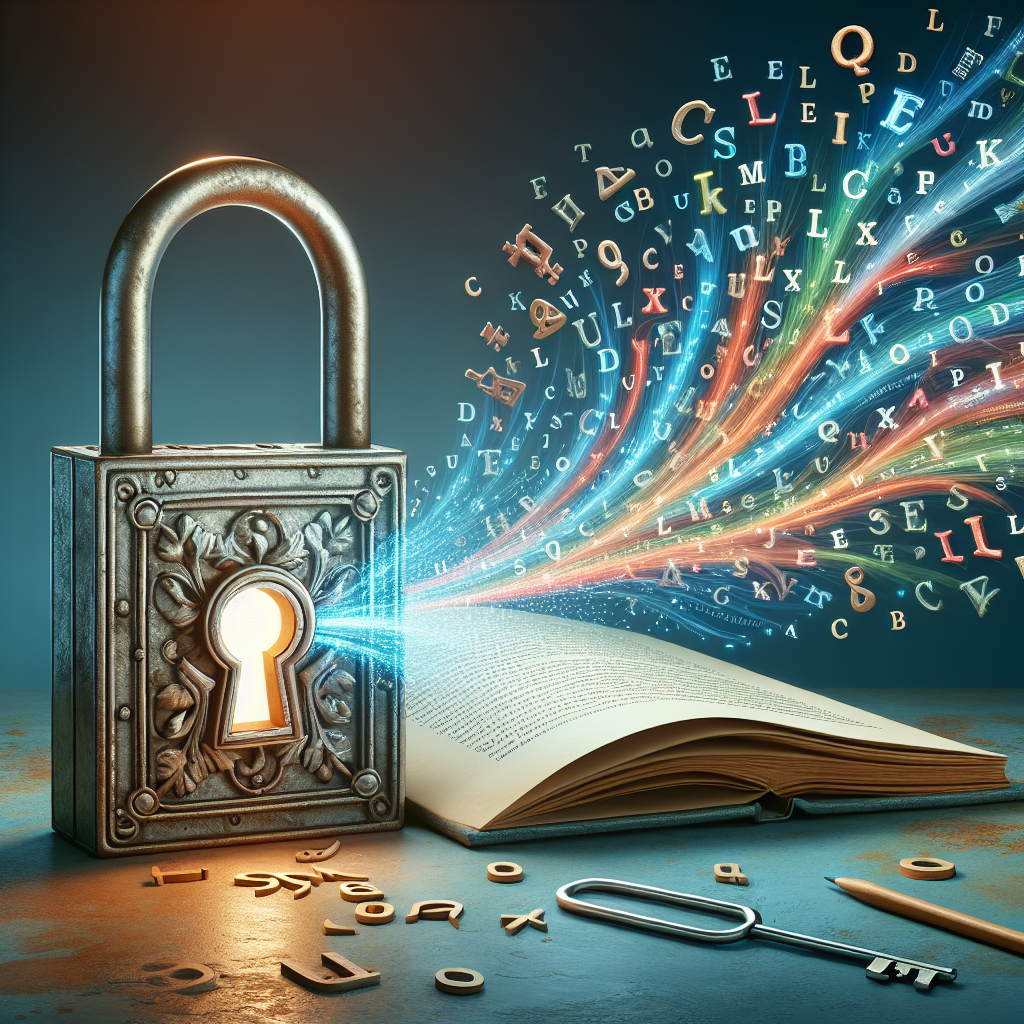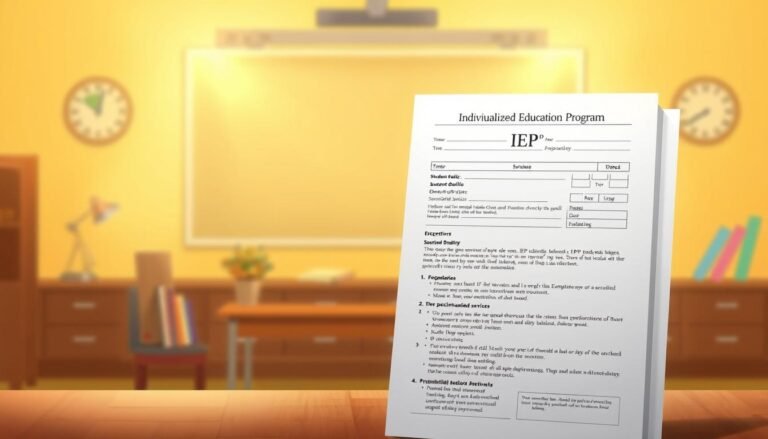
Unlocking Potential: A Comprehensive Guide to Diagnosing Dyslexia
Introduction
Dyslexia is often misunderstood, dismissed, or overlooked entirely, leaving many individuals struggling in silence. However, understanding and diagnosing dyslexia is crucial for unlocking potential—both for those who experience it and for those who strive to support them. In an age where literacy is a cornerstone of society, the need for effective identification and intervention is more important than ever. This comprehensive guide aims to illuminate the intricacies of diagnosing dyslexia, shedding light on strategies, case studies, and actionable insights that can transform lives.
Understanding Dyslexia
Before diving into the diagnostic process, it’s vital to grasp what dyslexia is. According to the International Dyslexia Association, dyslexia is defined as a specific learning disability that is neurobiological in origin. It primarily affects an individual’s ability to read, spell, write, and often speak. The following table outlines common characteristics associated with dyslexia:
| Characteristic | Description |
|---|---|
| Difficulty with phonological awareness | Trouble recognizing sounds in spoken words, which affects reading and writing. |
| Struggles with decoding and spelling | Difficulty breaking down words into sounds and manipulating those sounds. |
| Slow reading speed | Reading at a slower pace than peers, leading to frustration in academic settings. |
| Difficulty with organization | Challenges in organizing thoughts and written work. |
| Trouble with time management | Difficulty in managing time, often leading to missed deadlines. |
Understanding these characteristics is essential for educators, parents, and professionals involved in the diagnosis process of dyslexia.
The Importance of Early Diagnosis
Diagnosing dyslexia early can significantly benefit affected individuals, paving the way for tailored educational strategies and interventions. Neglecting to identify dyslexia often leads to low self-esteem, academic failure, and social withdrawal. A poignant case study reflects this:
Case Study: Emma’s Journey
Emma, a bright and enthusiastic third-grader, loved storytelling but struggled with reading. Her teachers assumed she was simply disinterested, unaware that she had dyslexia. By the time she was finally diagnosed in the fifth grade, her confidence had plummeted. With a diagnosis came understanding—specific interventions turned her academic experience around, enabling her to thrive once more.
Emma’s story highlights the need for early intervention—as does research suggesting that children who receive appropriate support during the early years can significantly improve their reading skills and overall academic performance.
Signs to Look For
Recognizing the signs of dyslexia is paramount for effective diagnosis. Here are the primary indicators for different age groups:
Preschool Age
- Difficulty with rhyming and playing with words
- Delayed speech development
- Difficulty learning letters and sounds
Elementary Age
- Problems with phonics and decoding
- Consistent spelling errors
- Difficulty recalling names or words
Middle and High School Age
- Persistent difficulty with reading comprehension
- Avoidance of reading-related tasks
- Trouble with writing assignments
Awareness of these signs can enable parents and educators to advocate for assessments and proper interventions.
The Diagnostic Process
Diagnosing dyslexia involves a multi-faceted approach, often initiated with a comprehensive evaluation by qualified professionals. The following steps outline the typical diagnostic process:
Step 1: Initial Screening
Screening tools can be utilized by educators and parents to determine if there are notable concerns regarding a child’s reading abilities. These can include simple assessments of phonemic awareness and reading fluency.
Step 2: Gathering History
A comprehensive assessment often involves gathering a detailed history, including family background regarding literacy, previous educational experiences, and any relevant developmental milestones.
Step 3: Comprehensive Evaluation
A licensed psychologist or educational specialist will conduct a thorough evaluation that may include:
- Standardized tests of reading, writing, and language skills.
- Measuring cognitive abilities, such as processing speed and memory.
- Analyzing the child’s performance in comparison to age-appropriate expectations.
Step 4: Developing An Individualized Education Plan (IEP)
If dyslexia is diagnosed, developing an IEP tailored to the individual’s unique learning needs is critical. This plan will outline specific goals, accommodations, and support services aimed at fostering the student’s academic potential.
Real-World Applications
Understanding the application of dyslexia diagnosis in different settings can provide valuable insights.
Case Study: Ryan in a Public School
Ryan, a sixth grader with diagnosed dyslexia, received extensive support through an IEP. His educators provided targeted reading interventions, alongside the use of assistive technology. Over time, Ryan improved his reading fluency and gained self-confidence, transforming his outlook toward education.
The relationship between early diagnosis and practical, tailored interventions is essential for cultivating successful outcomes and fostering an environment where individuals with dyslexia can thrive.
Tools and Resources for Diagnosis
Navigating the realm of dyslexia diagnosis requires a variety of tools and resources to ensure accurate assessments:
- Screening Tools: Tools like the Dyslexia Screening Instrument (DSI) and the Comprehensive Test of Phonological Processing (CTOPP) can help educators begin the evaluation process.
- Educational Materials: Resources such as the Orton-Gillingham approach emphasize structured literacy education, enabling effective intervention strategies.
- Support Groups: Organizations like the International Dyslexia Association offer support, resources, and advocacy for families dealing with dyslexia.
Table: Key Resources for Dyslexia Diagnosis
| Resource | Description |
|---|---|
| International Dyslexia Association | Provides resources, advocacy, and community support. |
| Children’s Learning Institute | Offers assessments and intervention resources. |
| Learning Ally | Aiding dyslexic learners with audio books and resources. |
Leveraging these tools can guide educators and caregivers in recognizing and addressing the unique challenges presented by dyslexia.
The Role of Parents and Educators
Parents and educators play vital roles in recognizing potential signs of dyslexia and initiating the diagnosis process. Here are actionable steps they can take:
For Parents
Educate Yourself: Understand dyslexia’s characteristics and the importance of early detection.
Seek Help: If you suspect your child has dyslexia, consult with educators and seek screening opportunities.
- Advocate: Work with your child’s school to ensure they receive the necessary support and accommodations.
For Educators
Monitor Progress: Keep an eye on students’ literacy development and look for signs of struggle.
Facilitate Testing: Make recommendations for formal evaluations when necessary.
- Implement Classroom Strategies: Use evidence-based instructional strategies tailored for students with dyslexia.
Together, parents and educators can create a support system essential for promoting early diagnosis and intervention.
Motivational Insights
The journey of diagnosing dyslexia is not merely about identifying a learning struggle; it’s about unlocking hidden potential. With early detection and tailored interventions, individuals can build on their strengths, harnessing their unique talents in ways that might have once seemed impossible.
In the words of a famous advocate, “Dyslexia does not define you. Your aspirations do.” Embracing a positive outlook can resonate throughout educational journeys, inspiring those affected by dyslexia to pursue their passions fearlessly.
Conclusion
"Unlocking Potential: A Comprehensive Guide to Diagnosing Dyslexia" serves as an invaluable roadmap for recognizing, diagnosing, and intervening in dyslexia cases. By understanding dyslexia’s impact and leveraging effective strategies for diagnosis, individuals can cultivate a transformative journey toward literacy and self-advocacy.
As we aspire to create more inclusive educational environments, it’s essential to recognize dyslexia not merely as a challenge but as an opportunity for growth. Encouraging exploration and learning can unlock vast reservoirs of potential and creativity, empowering individuals to embrace their unique journeys.
FAQs Section
What exactly is dyslexia?
Dyslexia is a specific learning disability affecting reading, spelling, writing, and sometimes spoken language, stemming from differences in the brain’s processing of language.At what age can dyslexia be diagnosed?
Dyslexia can be diagnosed as early as preschool, although formal evaluations typically occur in elementary school when academic demands increase.How can I help my child with dyslexia at home?
Providing a supportive environment, using multisensory learning techniques, and encouraging reading and writing activities can significantly help your child.Is dyslexia genetic?
Yes, dyslexia often runs in families. Genetics can play a significant role in the likelihood of an individual being affected.Do individuals with dyslexia have different cognitive abilities?
Absolutely. Many individuals with dyslexia possess above-average intelligence, showcasing strengths in areas beyond reading and writing, such as visual-spatial skills, problem-solving, and creativity.- Can dyslexia be outgrown?
While dyslexia itself does not get "cured," individuals can learn to cope and develop effective reading strategies through targeted support and interventions.
By keeping discussions around dyslexia open and informative, we continue to pave the way for understanding and support for those affected by this learning difference. Unlocking potential through insight, awareness, and action creates pathways to success for all learners.
















